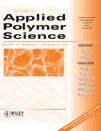Improvement of the Nafion–polytetrafluoroethylene membranes for potential direct methanol fuel cell use by reduction of the methanol crossover
Abstract
The possibility of ultrathin Nafion/expanded polytetrafluoroethylene (ePTFE) membranes used as proton-exchange membranes (PEMs) for direct methanol fuel cells (DMFCs) was investigated in this study. Nafion/ePTFE membranes with a thickness of ∼ 14 μm were promoted by self-assembling Pd nanoparticles on the surface to reduce the methanol crossover. The loading of the Pd nanoparticles assembled on the membranes was 1.6–1.8 μg/cm2 and had little effect on the high conductivity of the Nafion membranes. With the self-assembly of Pd nanoparticles, the methanol permeation noticeably decreased from 340 to 28 mA/cm2. As a result, the open- circuit voltage of the Nafion/ePTFE membranes that were self-assembled for 48 h had a more significant increase from 0.55 to 0.73 V. The reduction of methanol crossover significantly increased the DMFC voltage-current performance, and this means that self-assembled Nafion/polytetrafluoroethylene PEMs have promise in DMFCs. © 2008 Wiley Periodicals, Inc. J Appl Polym Sci, 2008




